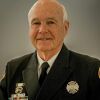As we say goodbye to the past year, here’s a question to contemplate: What is your strategic plan for the year ahead, both for your department and yourself?
What is a strategic plan?
As a brief refresher, a strategic plan is a process used to identify personal improvement or organizational goals and the means by which these goals can be accomplished.
A strategic plan should include a:
- Clear vision
- Timeline
- Quarterly or even monthly benchmarks
- Method to track your progress
It can also identify the individuals, as well as internal and external organizations, that can assist you in achieving these goals.
This type of planning doesn’t need to be an exhaustive blueprint for the year. However, creating a loose framework for what you want to accomplish in specific areas of your life can put your goals into tighter focus and make them more attainable.
Despite the advantages of having a strategic plan, some will push back on the practice with an excuse, such as, “I just don’t have the time for that much work.” Others, particularly those near the end of their career, may say, “Leave that to the next chief.” However, without a strategic plan or at least one strategic goal, you are likely to enter the year ahead doing the same thing you have done for years, while, in some cases, expecting a different outcome. Good luck with that approach.
Strategic plans for all areas of life
The creation of a strategic plan is the first step to making lasting changes in either your personal life or in the future of your department.
- Personal plan: A personal strategic plan may be taking at least one new course on fireground tactics, or perhaps starting or finishing that degree program you’ve always wanted, knowing that, in today’s fire service, education and career experience are cornerstones to successive leadership roles.
- Department plan: What are the hard issues facing your department? Recruitment? Retention? Competitive salaries and benefits? How are you going to implement a plan to influence the need for these changes and gain the support of your citizens and of your governing legislative body in these inflationary times?
The plan, however, is just the beginning. My suggestion is to start small and learn from one or two more easily achievable goals. That experience should help teach you how a strategic plan with lasting goals should work within your organization.
Strategic plan buy-in
Whether personal, departmental or both, it’s called a strategic plan because it will require time, diligence, a degree of flexibility, patience and the assistance of others to see it through from beginning to end. Some strategic plans may take years to fully implement and achieve, underscoring the need for set benchmarks along the way. Remember that there can be many distractions that may temporarily derail the timeline for your plans. I build in reminders for my benchmarks with calendar reminders interspersed throughout my daily planner. These are realistic interim goals that help keep me on track.
Whatever you decide your personal and departmental goals for the year might be, it will take some planning, input and, above all, buy-in from those assisting you with either. Personal buy-in includes your family, who will have to understand that in addition to your regular hours at the department, you will need additional time, even at home, to initiate, conduct and complete your personal or departmental strategic plan. Buy-in partners should also include key members of the department, particularly any officers or staff members who provided input and agree with the goals, as well as the path to achieve the overall objectives.
A successful fire department strategic plan is everyone’s responsibility
A true strategic plan for the department will also require a thorough understanding of how it will be accomplished, not just by the officers, but by most department personnel, from the seasoned veterans to the newest recruit. The plan is more likely to succeed when everyone understands what it is designed to achieve and how the outcome will affect them personally. Periodic updates on the progress of the plan will also keep everyone on board.
A leadership course I took several years ago addressed how an uncoordinated plan develops silos in which people whose working concept of the plan isn’t the same as what was written and proposed. These individuals may think they are working within the plan’s stated goals but are actually detached from the organization’s original strategy.
Here’s a visual example of how a coordinated strategic plan should run:
The five metronomes are started at different times and are in different phases of beating their rhythm. Once suspended in the air, the individual metronomes are influenced by the other rhythms until all are moving in the same direction, to the same rhythm, at the same time.
Strategic plans help fire, rescue and EMS departments be more in sync organizationally. No one misses a beat, and a similar synchronous, synergistic effect occurs.
Don’t wait, the time to start this process is now; The year ahead will always be here before you know it. Good luck!
Stay safe!
This article, originally published on December 18, 2022, has been updated with a video and additional resources for fire chiefs to conduct annual fire department strategic planning.














